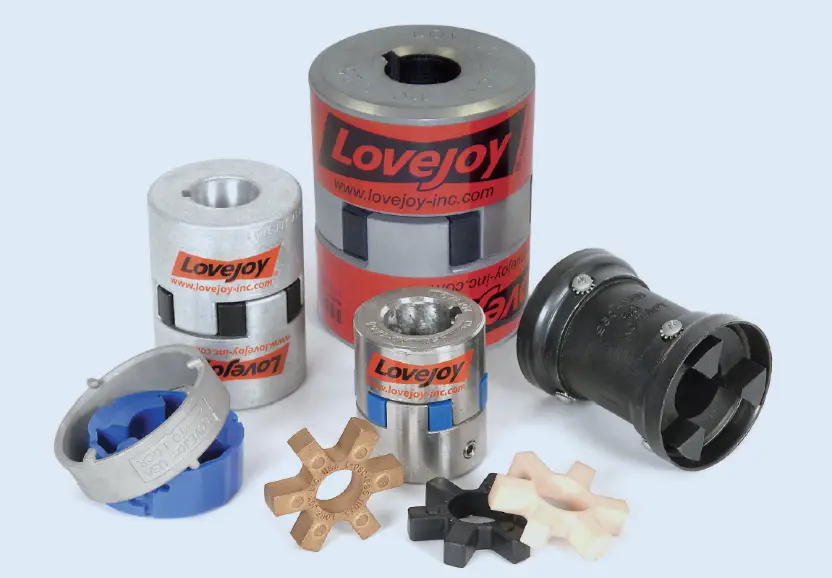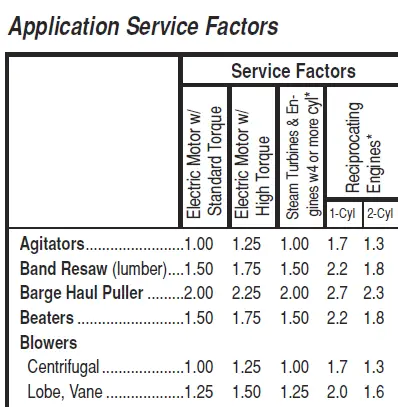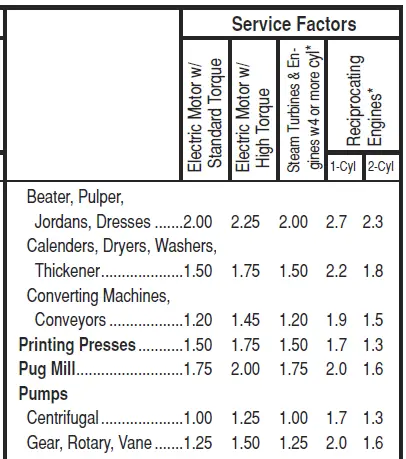
Jaw type shaft couplers are a lifesaver. These wonderful pieces of machinery allow for torque transmission between two different items and account for radial, angular and axial misalignment. It also has built in shock absorption that diffuses impact loads, like from reversing loads, and start up loads. Jaw shaft couplers do this by having a mechanism, the spider, to connect two jaws. One Jaw connects to each shaft and the spider slips between the jaws.
Great reasons to use jaw couplers include the following:
- Allow for some misalignment (let’s face it, it is tough to get shafts to align right!)
- Thousands of options for shaft size, torque transmitted and spider material
- No metal to metal contact
- Resistance to dirt and oils
- Nearly maintenance free
- Smaller sizes are readily available (no 8-12 week lead times). You can even buy them on Amazon.
- Fail-safe. If the spider fails, the jaws will still make contact with each other. There will be metal on metal contact there, so be sure to replace the spider when this happens.
Determining Torque
The first thing that we must do in selecting the proper jaw type is to calculate the torque and application service factor. Torque is relatively easy and straight forward to calculate. It can be done with the following formulas.
Pretty simple.
Service factor
Now that we have this, we need to look up the service factor from the manufacturers chart. Simply multiply the calculated torque by the service factor to get the torque needed to size the jaw. The service factor is an essential element that accounts for impact loads that will be seen on the coupler.
For example, something powered by an electric motor will generally have a lower service factor than one powered by an internal combustion engine. In single cylinder 4 stroke engines, every other rotation contains an impact load when the cylinder fires so there will be lots of torque for a brief moment. Electric motors have much smoother operation.
Every manufacturer has one of these charts. Look for two or three cases that describe your application. If they have different service factors, always pick the highest factor.
The reason for this because is while it a much better position to difficult to justify upfront costs if you can avoid future failures. Field failures are costly; there is lost production, diagnosing, engineering and fabrication costs, etc. that need to be considered.
Generally speaking, when a field failure occurs, there is way too much labor put in to solving the problem which adds up quickly and leads to a lot of costs. It gets worse if you are mass producing this item, because you may now have to add in the costs of field repair or worse, the cost of lost customers. So please, size it to the larger service factor.
Once you have the required torque value, you are ready to select your spider and jaws.
Learn how to Select the Right Spider and Jaw Set
Application Example
In my world, things without a practical application are worthless. So, I wanted to use the log splitter power train as an example.
The power source is a basic Harbor Freight 5 HP gas engine that will meet our needs.
Even a Harbor Freight engine should last for years if given proper maintenance and kept covered so that exposure to moisture does not get inside and cause it to rust. These few steps can help you extend the life of a motor and save you money in the long run.
Our pump is a Haldex two stage gear pump with a ½” keyed shaft. Right off the bat, we are going to need something to handle the difference in shaft size. A jaw type coupler will be perfect because we can use two different jaw parts.
Ok, let’s get started. I have had great success using Lovejoy L series couplers for applications such as these. We first need to size the jaw part of the coupler and we do this by calculating the torque. We will use the 5 HP engine running at 2500 RPM and come up with 126 in-lb. of torque required.
After finding the nominal torque, the next thing we want to do is make sure we are using the correct service factor. This is an added design factor based on the application.
Looking through the Jaw Application Service Factors guide we do not find a listing for hydraulics. Instead, we will need to find the section where we can locate the proper pump. For this application, we will be using a Rotary Gear Vane Pump and will want to use a higher service factor. In this case, I am going to go ahead and use the 1.50 service factor which will bring our torque to around 190-inch pounds.
Happy designing!
Learn how to Select the Right Spider and Jaw Set
(All images/charts courtesy of Lovejoy Jaw Type Couplings Catalog)





